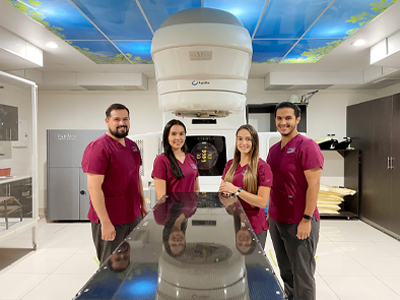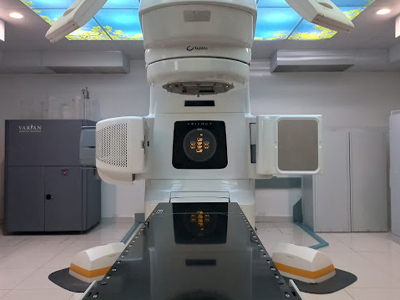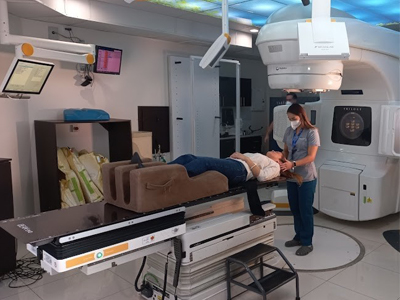Radiocirugía Estereotáxica de Cuerpo
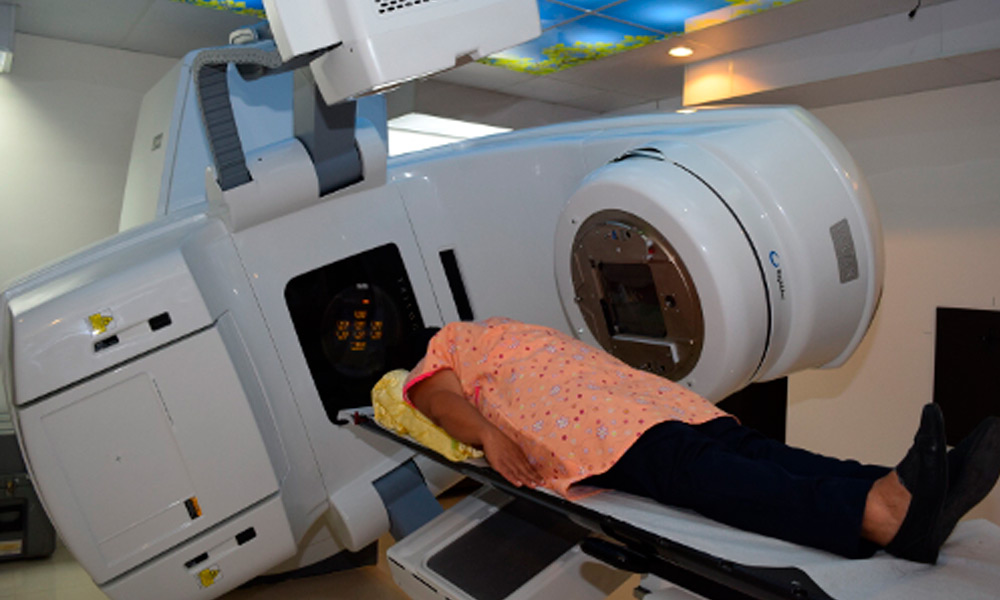
Los principios de la SRS, o sea la radiación de alta precisión están siendo usados en la actualidad para el tratamiento de tumores del cuerpo, en un procedimiento llamado Radioterapia Estereotáxica de Cuerpo (SBRT).
Altas dosis en pocos tratamientos (1-5 tratamientos) La SBRT actualmente se utiliza en el tratamiento de tumores malignos o benignos de tamaño pequeño a mediano en el cuerpo y en sitios comunes de la enfermedad, tales como metástasis en: Pulmón, hígado, abdomen, columna, próstata, mamas y cabeza y cuello principalmente.
A pesar de su nombre y en comparación con la radioterapia tradicional, es un procedimiento no quirúrgico que entrega radiación sumamente enfocada en dosis mucho más altasy en solamente uno o unos pocos tratamientos. Este tratamiento es posible gracias al desarrollo de tecnologías de radiación altamente avanzadas que permiten la entrega de dosis máximas dentro del blanco, mientras se reducen al máximo la dosis que recibe el tejido sano circundante. El objetivo es administrar dosis que destruyan el tumor y logren un máximo control local.
Preparaciones especiales necesarias para el procedimiento
La SBRT se administra con la ayuda de un equipo de personal de radioterapia, que suele comprender un oncólogo radioterapeuta, un enfermero e imagenólogo especializados en radioterapia, más un físico y un dosimetrista. Antes de que comience su tratamiento, usted tendrá una o varias citas con los integrantes de su equipo para hacer los planes y preparativos necesarios para su tratamiento; quizás esto requiera que usted se someta a otras pruebas y procedimientos. Antes de su primera sesión de tratamiento:
- Quizás haya que implantarle unos marcadores fiduciales (llamados también semillas) en el tumor o en sus cercanías. Los marcadores son pequeños segmentos de oro metálico que se visualizan claramente en estudios con imágenes y que más adelante sirven de guía para el tratamiento de radioterapia. Su médico le explicará este procedimiento en más detalle, si es necesario.
- Es posible que le hagan tomografías u otras pruebas con imágenes para localizar con exactitud los lugares de su cuerpo que serán tratados con radioterapia.
- Se elaboran unos dispositivos de posicionamiento como moldes, máscaras, apoyos y cojines, que ayudarán a mantener su cuerpo en la misma posición en cada sesión de tratamiento.
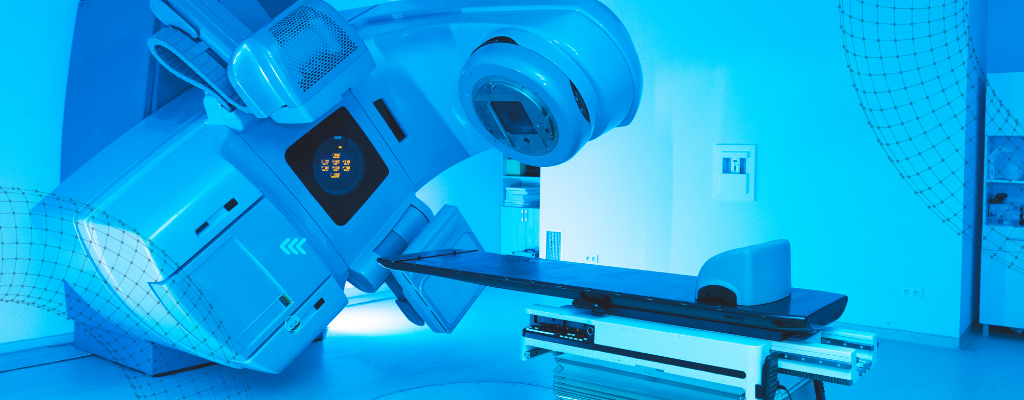
Las sesiones de tratamiento con SRBT
En la SBRT se administran de 1 a 5 dosis de radiación a lo largo de 1 a 2 semanas. Usted y los integrantes de su equipo hablarán de antemano sobre el horario exacto de su tratamiento. Cada sesión de tratamiento dura 60-90 minutos. Durante cada sesión, usted puede esperar que ocurra lo siguiente:
- Usted se quita la ropa y se pone una bata de paciente. El imagenólogo lo sitúa en la posición correcta sobre una mesa de tratamiento; en este momento se usa cualquier dispositivo de posicionamiento que se haya elaborado.
- El imagenólogo se va de la sala y enciende el linac desde afuera. El imagenólogo le observará en un monitor y usted podrá hablarle a través de un intercomunicador.
- Con ayuda de radiografías o tomografías se confirma el posicionamiento y la alineación correctos de los haces del linac respecto a su cuerpo; a continuación se dirigen los haces hacia el tumor. Usted escuchará el aparato pero no sentirá nada.
- Podrá regresar a su casa poco después de que termine la sesión de tratamiento. Su médico o el personal de enfermería le dirán cuándo debe volver para su próxima sesión, si es necesario que regrese.
Posibles efectos secundarios de la SRBT
Con cualquier tipo de radioterapia, las células sanas y el tejido que rodean al tumor también pueden verse afectados por el tratamiento. Esto puede ocasionar efectos secundarios como cansancio y alteraciones de la piel. La mayoría de los efectos secundarios desaparecen poco después de que finaliza el tratamiento; sin embargo, algunos no aparecen sino hasta meses o incluso años después del tratamiento. El tipo y la intensidad de los efectos secundarios que usted tenga dependerán de la cantidad de radiación que se le administre y del lugar del cuerpo que recibe el tratamiento. Su médico puede darle más información sobre los efectos secundarios que usted puede esperar y lo que puede hacer para controlarlos. Si es necesario, pueden recetarse medicamentos para tratar algunos efectos secundarios. Los integrantes de su equipo de atención médica también le pueden enseñar métodos para lidiar con los efectos secundarios.

